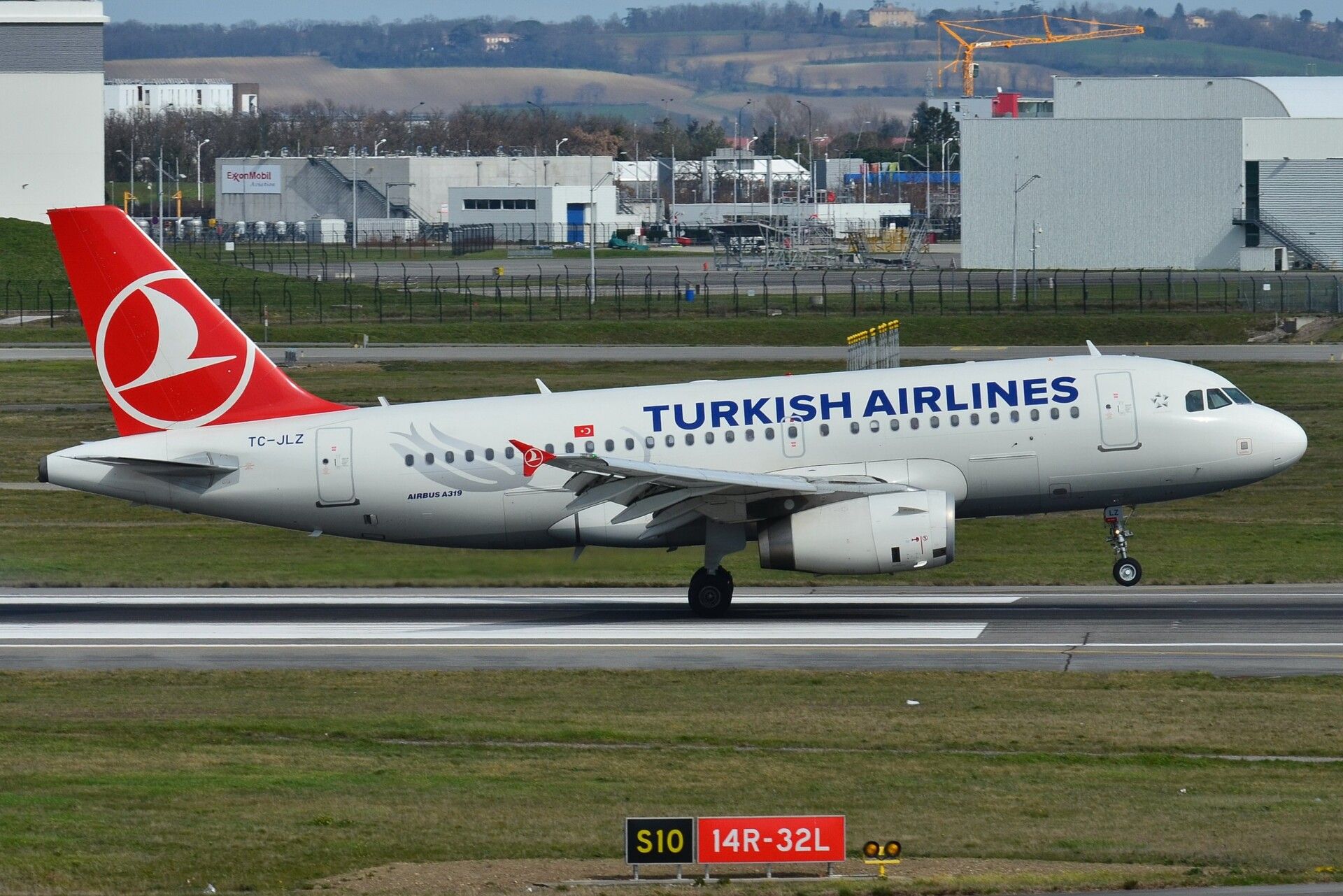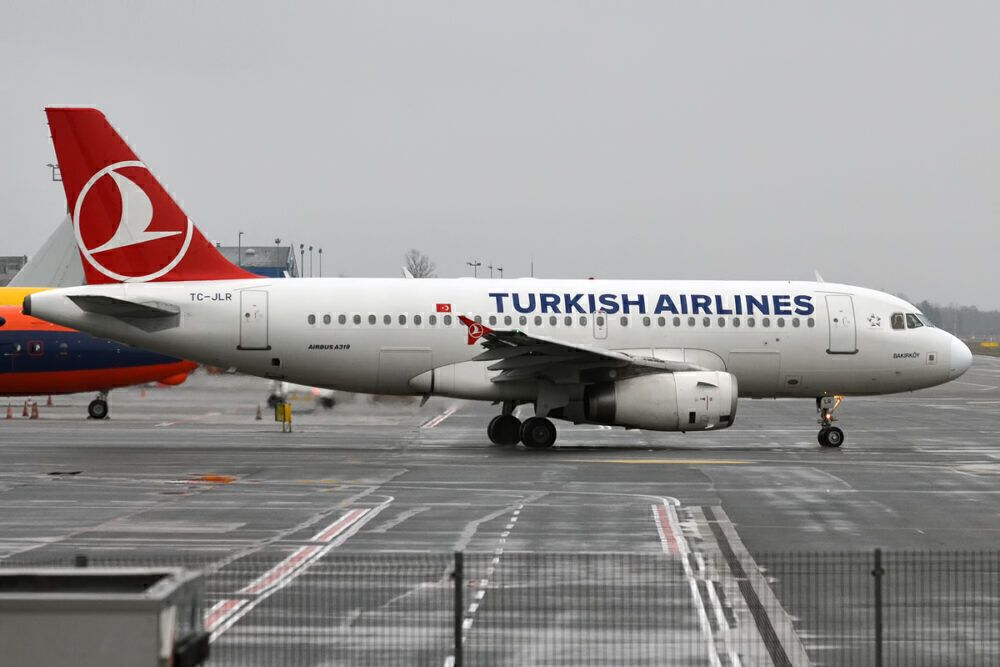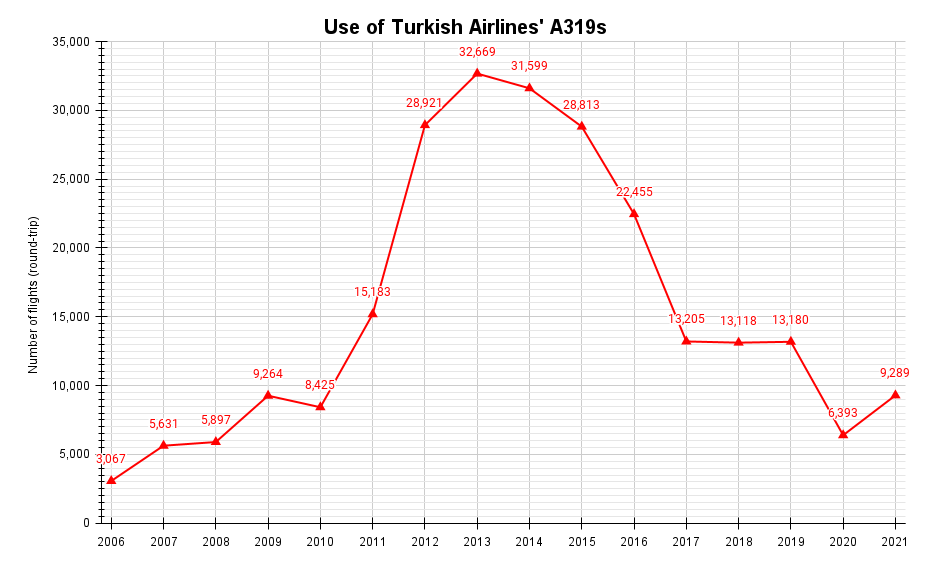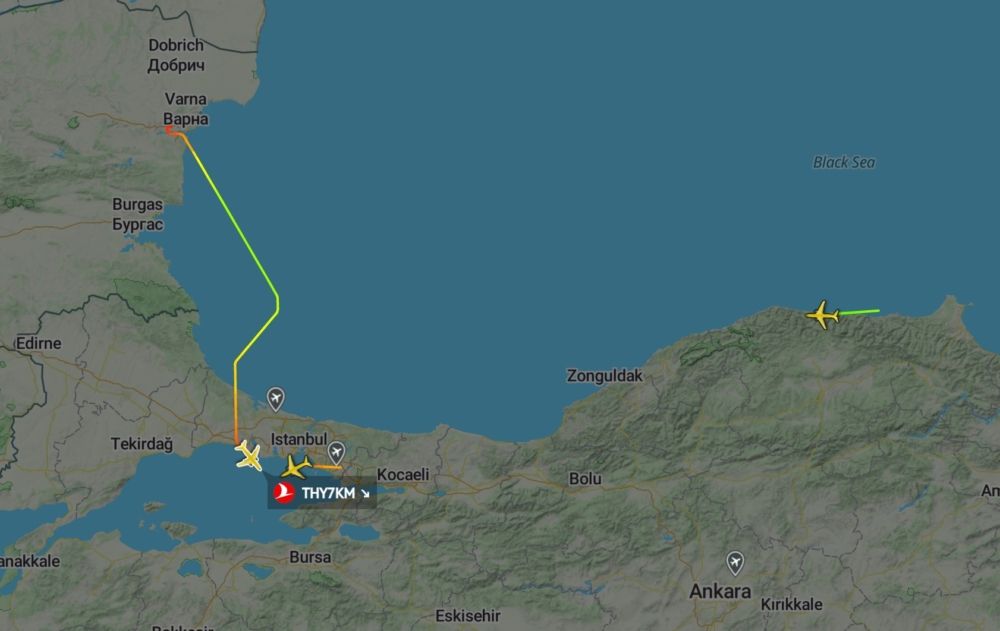Everyone knows about Turkish Airlines' fast growth, comprehensive network, and fleet. However, there's one narrowbody that has been operated for 15 years yet plays only a very marginal role: the often-forgotten A319.
Turkish Airlines' A319s
The first A319 was introduced in April 2006, according to ch-aviation.com. Two examples (TC-JLM and TC-JLN) joined the fleet in April, with the first revenue flights (all domestic) taking off the following month. Two additional aircraft (TC-JLO/JLP) arrived in 2008, six in 2011 (TC-JLS/JLT/JLU/JLV/JLY/JLZ), and four in 2012 (TC-JLR/JUA/JUB/JUD).
Turkish Airlines has operated a total of 14 A319s, but now only six remain. They're the ones that were delivered in 2011, and all six are active. Most of the others are now with Pakistan's Shaheen Air, and one is with Air Albania, a carrier created by Turkish Airlines that took off in 2019.
Stay aware: Sign up for my weekly new routes newsletter.
Significant but short-lived growth
The arrival of 10 aircraft in 2011/2012 had a massive impact on the use of the small narrowbody, as vividly shown below. It didn't last long as newer, larger narrowbodies with stronger economics increasingly came online. The B737-800 and A321 grew especially keenly in this period.
By 2016, the use of the A319 was a fraction of what it was just a few years before. This decline coincided with immense growth for Turkish Airlines – its total flights between 2011 and 2016 rose by 78% – at what was highly congested Istanbul Atatürk. Another small narrowbody (the B737-700) was barely used after 2016.
Geopolitical events, the civil war in neighboring Syria, and the failed coup attempt in July 2016 contributed to how aircraft – including the A319 and B737-700 – were deployed as demand slowed and capacity reduced or grew only shallowly.
The peak year for the A319 was 2013
In 2013, the A319 was Turkish Airlines' fourth most-used type by total flights, analyzing schedules information indicates. The type had almost nine in every 100 seats on a network that spanned 58 routes with over 200 annual flights. It was also used less frequently to places like Sanaa and Aden in Yemen, various cities in Libya, and Mazar-i-Sharif in Afghanistan.
How things have changed. In 2021, the A319 ranks 10th, with only the A330-200, A350-900, and B737 MAX 9 having fewer movements – and two of those are nearly new. The narrowbody has reduced from almost ten in every 100 flights to three in 100, virtually the same proportion to when the type was introduced in 2006.
What's happening this week?
The A319 has 170 movements this week, all from Istanbul, Europe's busiest airport this year. There's a significant focus on domestic service, with only nine international routes on a low-frequency basis: Bucharest; Chișinău; Constanta; Ganja; Mykolaiv; Nakhchivan; Rostov-on-Don; Salzburg; and Varna.
The 699-mile (1,125km) link to Rostov, Russia, leaves Istanbul at 01:20 and arrives back at 06:55. The times are driven by feeding Europe-wide and Turkey connections. Only one route is a one-stop: Istanbul to the Azerbaijani cities of Ganja and Nakhchivan, which are served triangularly.
Have you flown Turkish Airlines' A319s? Let us know in the comments.




